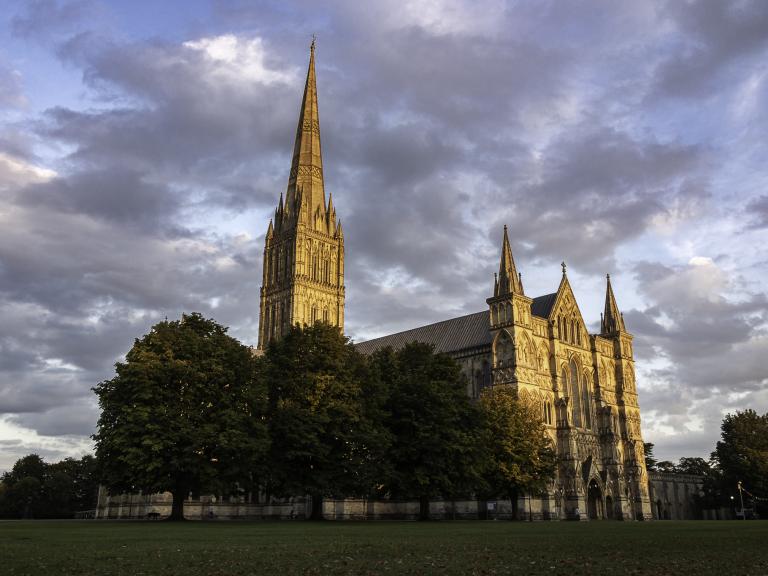Archaeological remains can be exposed wherever modern development occurs. The archaeologist’s lot is to grasp any opportunities to observe and record details left by former residents as the chance arises. Such an opportunity, which produced thought-provoking results, occurred during groundwork associated with the redevelopment of the former site of the ATS garage at 28 St Edmund’s Church Street, Salisbury in 2013.
Archaeologists were granted access to the site to record any archaeological features and layers that were exposed during work on the street frontage. Very little remained; as we speculated in Winchester Street several weeks ago for the absence of later and post medieval layers, all traces of the shallow foundations had been removed by previous redevelopment. However, a range of medieval and post-medieval refuse pits with four wells, which all penetrated below the level of truncation, together with two post-medieval walls, remained and were recorded. One post medieval pit contained a large quantity of horse skulls, which were probably linked to a nearby knacker’s yard/glue factory, whilst a worked red deer antler also hinted at odorous craft-industries, using animal by-products, in this part of Salisbury.
Despite the limited preservation of archaeological remains on the site, the cluster of wells provides a suitable opportunity to ponder the all-important issue of water supply in the city. Drinking water was available from the system of open water channels which ran through the streets. This system was extremely insanitary and, as we can see here, wells were also dug to satisfy demand. They are common in Salisbury, often situated in back yards where they were easily accessible and could be shared by several households. Most were chalk lined but were subsequently rebuilt in the upper parts using bricks, when they became more readily available.
Despite their frequency only one well, in Milford Street, has been fully excavated. This was dug in 1973 by members of the Salisbury Museum Archaeological Research Group when issues of health and safety were virtually non-existent on archaeological excavations. The results, which were published subsequently by Peter Saunders and David Algar, highlighted the extreme effort that was required of a skilled well-digger in their construction. The well measured 0.8 m in diameter, making it a tight, claustrophobic squeeze within the chalk block lining, and was 4. 5 m deep to the water table. The true archaeological potential was realised by the unexpected discovery of metal casting fragments from the production of tripod cauldrons with late 14th or 15th century pottery. These results revealed details of a medieval foundry, including bell casting, in this part of Salisbury, and also high-lighted the need to dig more wells safely to recover objects and water-logged environmental remains which were thrown in.
Our interest in the wells does not end there. The discovery of a pit containing horse skulls, possibly linked to an adjacent knacker’s yard, is also relevant to the issue of water supply. Such insanitary industries in the heart of the city created effluent, which, added to fluids overflowing from adjacent cesspits, percolated through to the water table and tainted the contents of wells, creating ideal conditions for cholera. Public health was therefore a constant issue in the city throughout the medieval and post medieval periods before the installation of a municipal water supply in the 1850s.
As we progress along St. Edmund’s Church Street towards the Market Square, we pass the former site of Goddard’s Garage where another small excavation took place in 1987. The Trust for Wessex Archaeology, together with knowledge of Salisbury’s archaeology, were both in their infancy. The garage may well have destroyed all traces of buildings on the street frontage when fuel tanks were installed. The excavation was located where there was a deep build-up of dark garden soil, which overlay natural clay. The summary report concluded that the absence of building remains indicated that the area had never been developed. This is possible; however, as we have seen elsewhere, deep layers of garden soil are now seen as being typical of the ‘back-lands’. As we have glimpsed elsewhere but will see in more detail at the site of the Elim Chapel, these areas were integral parts of social and economic life for city residents throughout the medieval and post medieval periods.
